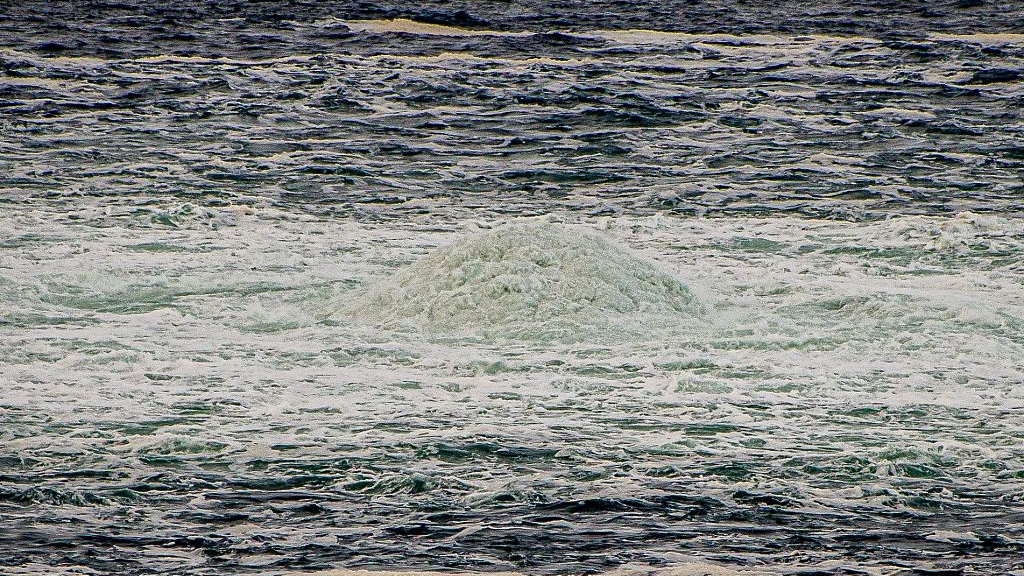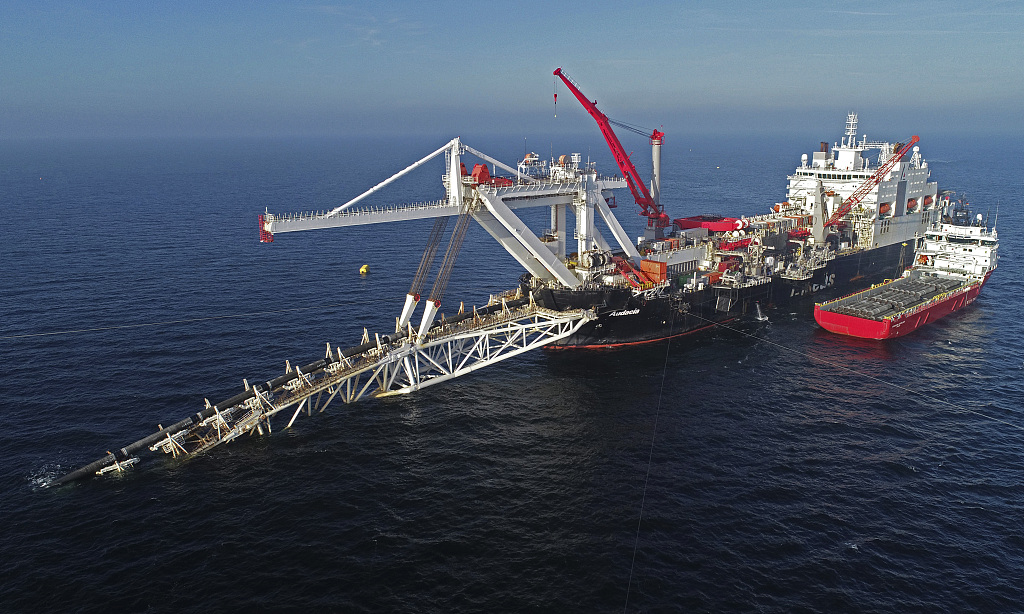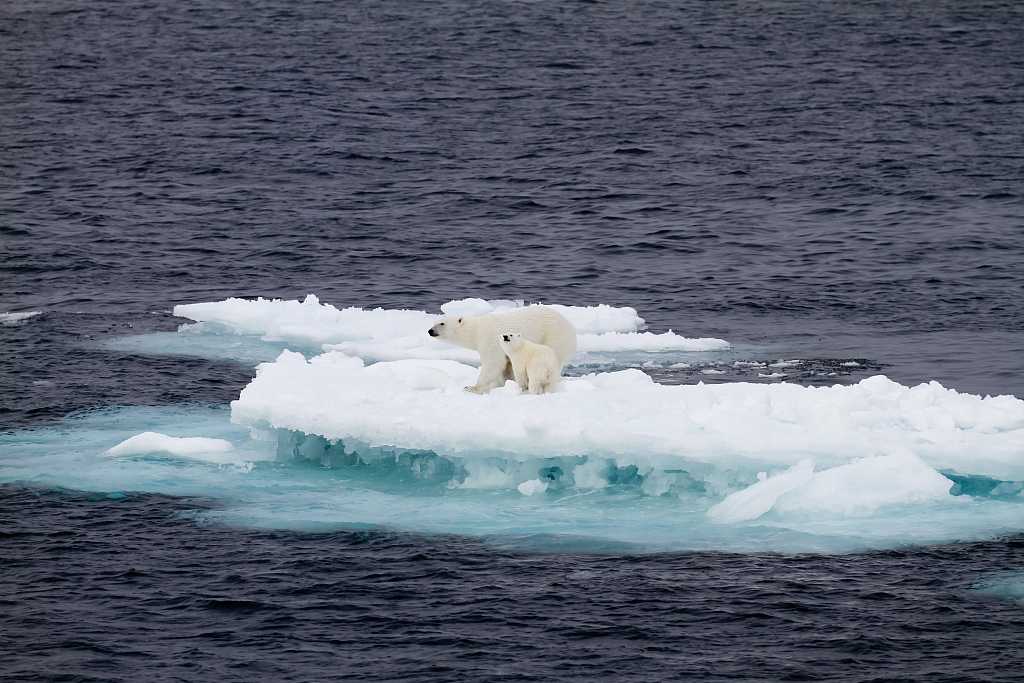The gas leak in the Nord Stream 2 pipeline, one of two pipelines running between Russia and Germany in the Baltic Sea, ceased on October 1, according to the Danish Energy Agency. The gas leak in the Nord Stream 1 pipeline is ongoing based on the aerial photos taken by the Swedish coast guard on September 28. As of today, at least 80,000 tonnes of natural gas has been released into the atmosphere, according to Norwegian Institute of Atmospheric Research.

Natural gas bubbling from one of the four holes above the Nord Stream pipelines in the Baltic Sea, September 29, 2022. /Danish Defense
Natural gas bubbling from one of the four holes above the Nord Stream pipelines in the Baltic Sea, September 29, 2022. /Danish Defense
Four leaks have been detected from the two pipelines so far. The first leak was discovered on September 26 from the Nord Stream 2 pipeline in the Danish part of the Baltic Sea. Its operators saw a sudden pressure drop when a one-kilometer-wide area of the Baltic Sea's surface was bubbling with escaping gas. Hours later, two more leaks were found on Nord Stream 1 – one in Danish territory and one in Swedish. The fourth leak on the Nord Stream 2 pipeline was found by the Swedish coast guard on September 29.
Neither of the pipelines were operational, but both contained natural gas, a fossil fuel widely used for heat and generating electricity.

A ship works offshore on the Nord Stream 2 pipeline between Russia and Germany in the Baltic Sea, November 11, 2018. /CFP
A ship works offshore on the Nord Stream 2 pipeline between Russia and Germany in the Baltic Sea, November 11, 2018. /CFP
Natural gas mostly consists of methane (CH4) – a greenhouse gas that is colorless, odorless and considered to be the biggest cause of global warming after carbon dioxide (CO2). It is produced from the remains of plants and animals that died millions of years ago, and built up in thick layers on the Earth's surface and ocean floors. Significantly, it has more than 80 times the warming power of carbon dioxide during its first 20 years in the atmosphere but soon fades away.
It takes time to precisely measure how much methane has escaped into the atmosphere. Nord Stream AG is an international consortium for construction and operation of two 1,224-kilometer gas pipelines under the Baltic Sea. According to the company, Nord Stream 1 pipelines, including two parallel branches, contained 600 million standard cubic meters of natural gas in total. Besides, there was 178 million standard cubic meters of natural gas in the Nord Stream 2 pipeline. The leaked gas volume corresponds to roughly 14.6 million tonnes of carbon dioxide-equivalent, which equals to about 32 percent of Denmark's annual greenhouse-gas discharges, according to Danish Energy Agency.

A mother polar bear with her cub stand on a floating ice. /CFP
A mother polar bear with her cub stand on a floating ice. /CFP
Scientists expressed their concerns about the impact of the Nord Stream leaks on the climate.
"It has the potential to be one of the biggest gas leaks. The climate risks from the methane leak are quite large. Methane is a potent greenhouse gas, 30 times stronger than carbon dioxide over 100 years and more than 80 times stronger over 20 years," said Jasmin Cooper, a research associate at Imperial College London's department of chemical engineering.
However, some scholars doubt the impact of the gas leaks on the global climate as a whole.
Although the Nord Stream breaches were huge, they account for around 0.14 percent of the global annual methane emissions from the oil and gas industry, says Mark Davis, chief executive of Capterio, a company in London that tracks industrial gas flares.
Considering the leaks in the Nord Stream 1 pipeline are ongoing, the observation and calculation for the exact quantity of released gas is in need.
(Cover image via CFP, with input from Xinhua, AP and Nature)
(If you want to contribute and have specific expertise, please contact us at nature@cgtn.com.)